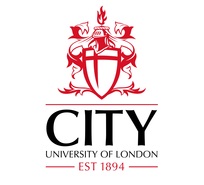
Résumé
Three-dimensional CFD numerical simulation is the most powerful tool for performance analysis of screw machines. This paper compares and analyzes two CFD numerical calculation methods based on moving and static grid, and proposes a static grid calculation method based on momentum compensation, which takes into account the wall velocity and fluid momentum on the rotor surface when the screw rotor rotates. That is, while the static grid is used, the rotation characteristics of the fluid domain between the rotors are considered. Compared with the commonly used static grid method, this method greatly improves the accuracy of the calculation, the calculation error of mass flow rate is reduced from 2.32% to 1.14%. At the same time, it is simple and easy to implement. It is also suitable for modelling screw machines with special-shaped rotors, which are still challenge for moving grids. The accuracy and reliability of the method are verified by comparison with the calculation results of the moving grid and the experiments.
Documents disponibles
Format PDF
Pages : 10
Disponible
Prix public
20 €
Prix membre*
15 €
* meilleur tarif applicable selon le type d'adhésion (voir le détail des avantages des adhésions individuelles et collectives)
Détails
- Titre original : A numerical CFD simulation method using static grid based on momentum compensation for screw pumps.
- Identifiant de la fiche : 30028989
- Langues : Anglais
- Sujet : Technologie
- Source : 12th International Conference on Compressors and their Systems
- Date d'édition : 09/2021
- Document disponible en consultation à la bibliothèque du siège de l'IIF uniquement.
Liens
Voir d'autres communications du même compte rendu (63)
Voir le compte rendu de la conférence
Indexation
- Thèmes : Circulation du fluide : tuyauterie, régulation, automatisme, sécurité
- Mots-clés : CFD; Simulation; Calcul; Géometrie; Pompe; Vis
-
Maxwell velocity slip and Smoluchowski temperat...
- Auteurs : JUNEMANN T., PLESKUN P., BRÜMMER A.
- Date : 09/2021
- Langues : Anglais
- Source : 12th International Conference on Compressors and their Systems
- Formats : PDF
Voir la fiche
-
CFD analysis on the effect of discharge port ge...
- Auteurs : THEOFANIDIS K., LU Y., KOVACEVIC A.
- Date : 09/2021
- Langues : Anglais
- Source : 12th International Conference on Compressors and their Systems
- Formats : PDF
Voir la fiche
-
Numerical simuation of two-phase flow distribut...
- Auteurs : CHOI S., LEE H., JEONG J.
- Date : 31/08/2021
- Langues : Anglais
- Source : 13th IEA Heat Pump Conference 2021: Heat Pumps – Mission for the Green World. Conference proceedings [full papers]
- Formats : PDF
Voir la fiche
-
Study of multiphase flow at the suction of scre...
- Auteurs : ARJENEH M., KOVACEVIC A., GAVAISES M., et al.
- Date : 14/07/2014
- Langues : Anglais
- Source : 2014 Purdue Conferences. 22nd International Compressor Engineering Conference at Purdue.
- Formats : PDF
Voir la fiche
-
Wall roughness influence on the efficiency char...
- Auteurs : LIPEJ A., MUHIC S., MITRUSEVSKI D.
- Date : 09/2017
- Langues : Anglais
- Source : Strojniski vestnik - Journal of mechanical Engineering - vol. 63 - n.9
- Formats : PDF
Voir la fiche
